A farmer’s life revolves around hard work leavened with the faith that nature will reward this with a generous bounty. Farmers in the Soan river basin – part of the mid reaches of the Indus basin in Pakistan’s Punjab province near the country’s capital of Islamabad – work the land, clear it of the previous crop, plough it, sow it, and then they wait for the rain.
Wheat is the staple grain covering most of the cultivable area in this region. However, it is very sensitive to the vagaries of weather like temperature and moisture changes. Despite its proximity to the capital, Soan is a fairly traditional region, made more so due to the fact that the middle basin lies outside the irrigation canal network. This means that Soan river basin is largely rain-fed, and thus the effects of climate change are felt more immediately.
If the rains are on time, there is celebration all around. Prosperity rolls in tandem with food security. There are enough crops to feed the family for the year; the rest is sold in the market to bring in the needed cash. When that happens, the house gets renovated, a daughter’s wedding expenses are taken care of, old and dilapidated farm structures like wells and livestock yards are repaired, more animal heads are added to the stock and sometimes there may be enough to buy a new vehicle, even if just a motorcycle.
![Pakistan Agricultural Research Council signpost [image by: Afia Salam]](https://dialogue.earth/content/uploads/2018/08/IMG_20161026_104524.jpg)
Soan river’s water scarcity, already a problem, is also exacerbated by farmers’ wanton extraction of ground water through tube wells, which have lowered the water table. Water is being extracted faster than the rate of aquifer recharge, worsening the drought conditions in the region.
Some farmers in the Potohar plateau have been brave enough to depart from traditional farming practices and adapt to these changes. They have become ‘role models’ for others. They are trained by experts from the PARC on their own farms, and then share the lessons with neighbouring farmers.
It is these individuals who are changing the face of Potohar. Unlike the rest of the country, where agriculture is the mainstay of the majority, people from the Potohar belt traditionally ventured into the Army, or other services. It is only now that a generation of people are returning from those professions through retirement or from losing their jobs and taking interest in their ancestral lands and trying to make a living from them.
The man with the Persian Wheel
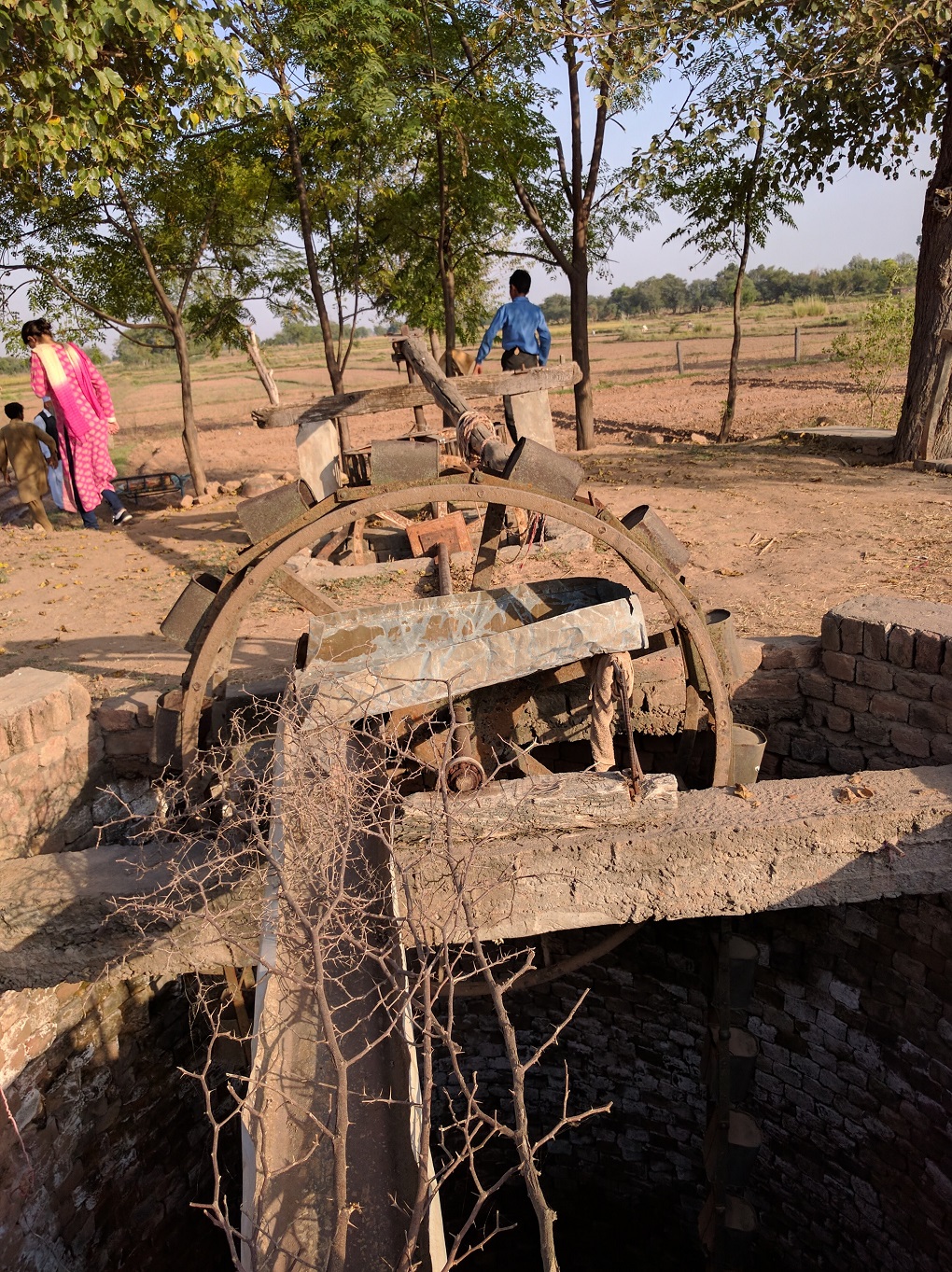
While the water in the wells of the neighbouring farmers is potable, they come to him to ask for water for their crops because it is supposed to be ‘sweet.’ The PARC experts attribute the perception of quality of his water to the process of aeration that the Persian Wheel allows. The oxygen thus takes away the odour of the stagnant water, and makes it seem ‘better’ and ‘sweet.’
Ayub and his siblings inherited his land along, but he spent most of his time at a job in the city. This could be one reason why he was not as rigid about the agricultural practices as traditional farmers. He agreed to experiment with different, high value crops like potatoes, moong beans and garlic for quick turnover, aside from the usual wheat patch, and was amenable to adopting drip irrigation for water efficiency and conservation. He also planted a small citrus patch.
To get the maximum benefit from his Persian wheel, he was planning to repair it and install a solar panel with 1 RPM diesel motor for water extraction. He is a small landowner, but along with his wife, who assists him in chores at the house and the farm, he feels he has found his niche in life. His wife, who has had to move to his small farm from the comfort of the small town where she earlier lived, was willing to rough it out with him, and has faith in his passion.
Enterprising young woman of the Soan river basin
Samina, a young woman, lives in a village called Arookus in the Margalla hills (which means den of snakes).
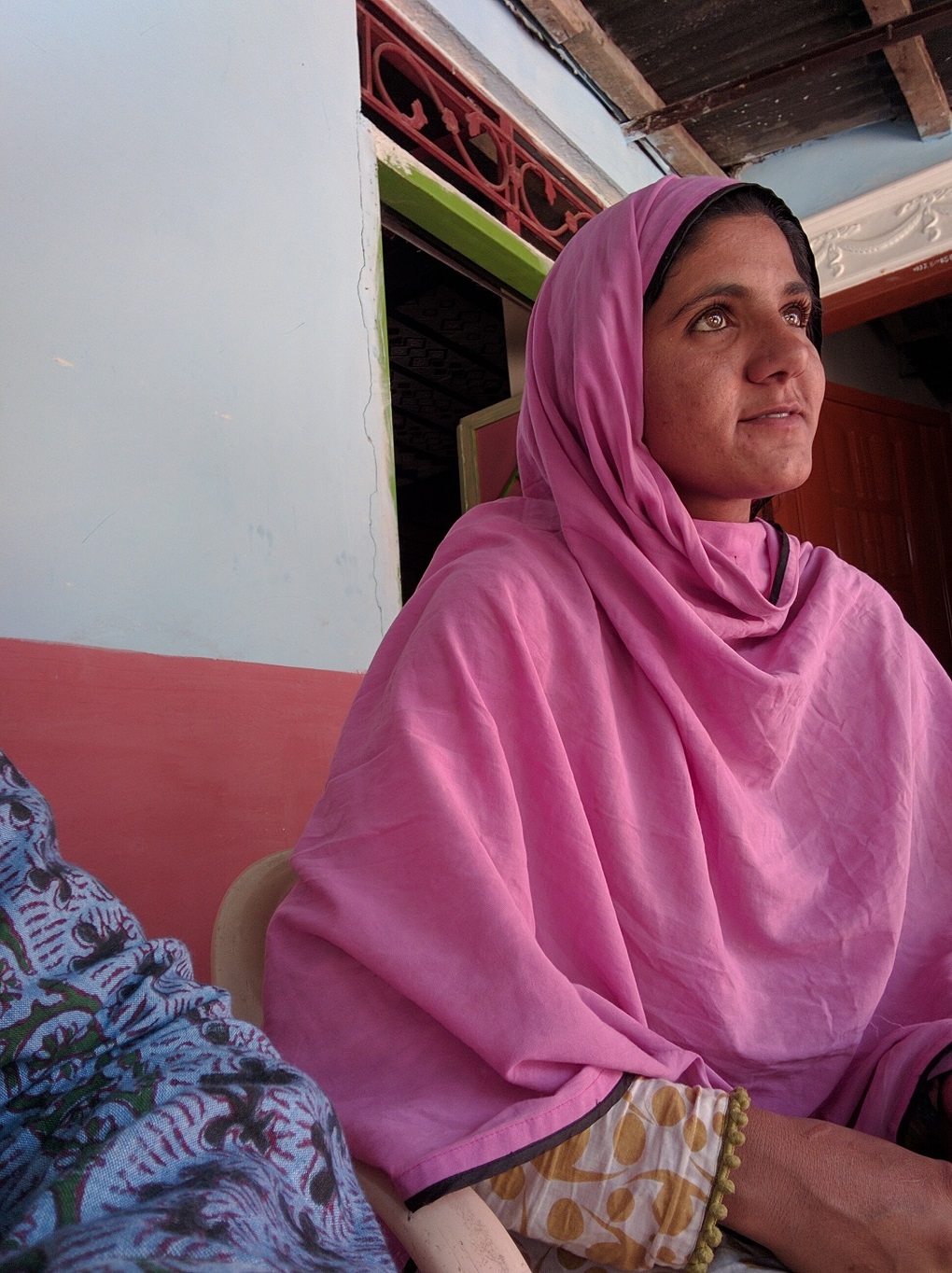
The only other way of reaching the main road is through an interesting, and somewhat frightening trolley serving as a bigger version of a chair lift. It is pulled along cables through a pulley, powered by a truck battery housed in a room complete with the motor and gear-box. This serves as a quick means of transport to the main road from where public transport is available to onward destinations.
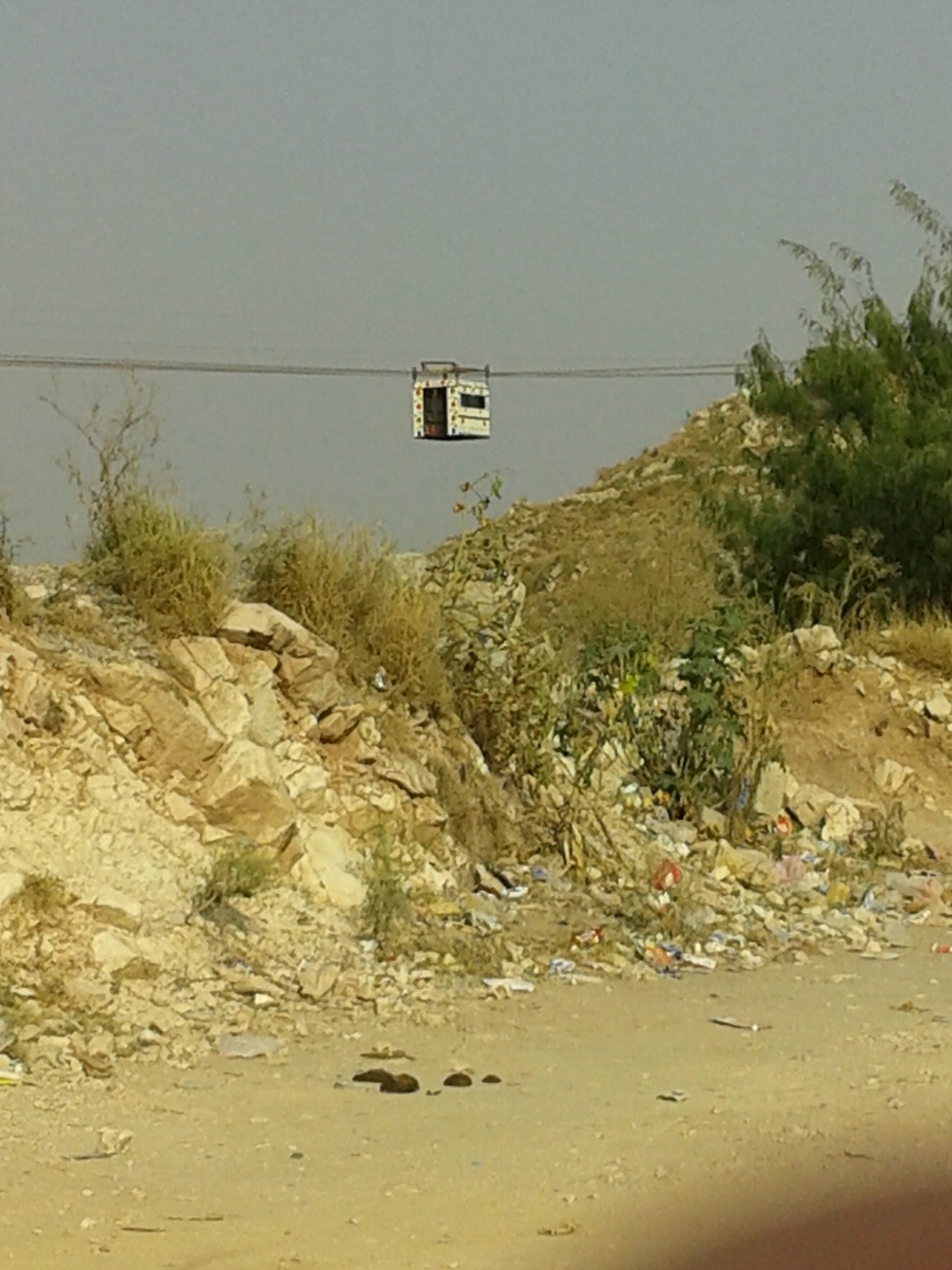
Samina received assistance to work on her patch of land, but she herself is the real success story in her community. Young and enthusiastic, she motivated other young girls in her village. When tunnel farming methods were taught to the residents to enable them to supplement their income, she put together a group of her young friends and neighbours and these girls became the tunnel farmers.
Her success and enthusiasm has proved infectious as her family members, especially her brother, became her biggest collaborator. He fabricated a stand for her to test out drip irrigation which she proudly displays to visitors. She got him to make a rain-water harvesting tank. She is now the change-maker for her community.
The biggest problem is availability of water, she says. There is also no value chain for their perishable products, which have to be sold in the nearby town. If they could access markets in the capital city, their produce would be able to fetch thrice the price with the growing demand for organic food.
From humble beginnings
Khadim Hussain’s would be a classic rags-to-riches story. He lives in the rolling plains of Fatehjang, in Attock district of Punjab province
If this little hut is humble, his beginnings were even more so. He worked as a labourer at a ‘tandoor’ (clay oven making unleavened bread), barely able to afford two square meals. Slowly, and with the help of the owner, he worked his way up to owning a tandoor. Then when the PARC team was looking for progressive farmers who would be willing to put in place adaptation measures at their farm, he become now only an instant convert, but also the biggest promoter of that work.

He also understood that alternate energy was the way forward and fixed his appliances on DC current to gain self-sufficiency. An avid learner, he travels to far corners of the country to learn about the plants that need to be propagated and is the most reliable supplier in his belt for grapes and fruit saplings, as well as drip irrigation systems. He draws out plans for large farms and experiments with seed varieties and grafting to promote better quality of grapes, citrus, olives, which he supplies to different farmers.
He also makes the cement pillars on which the grape vines are hoisted to keep them off the ground. He has become the ‘go to’ person in the entire belt for both these solutions.
Leaders of the Soan river basin
Haji Asim is one of the most high profile role models to spread adaptive techniques among his peers in the Fatehjang area. He has a large farm, where he has undertaken multiple interventions. There is a very good model of water harvesting from the seepage coming from a neighbouring dam, which has enabled him to fill three fairly large ponds, from which the water is pumped into his fields through a motor running with electricity generated through solar panels.

The innovator
Amanullah’s story is complex and epitomises the changes happening in the area. An engineer by profession, settled in the US with a good job, he felt the lure of rural life. He had no experience of agriculture and did not really belong to the area.
It is not easy for an outsider to come and buy land. Selling land, even unutilized land, is akin to sacrilege in conservative rural communities. He faced resistance from the locals when he attempted to buy a piece of land on the banks of the Soan river, and he was willing to take his chances. With difficulty he was able to overcome the suspicion, and set up all the possible solutions he wanted to experiment with, with the help of the Hi-Aware team.
With an engineering background and a business dealing in solar solutions, he set up a small weather station, made a portable solar operated pump to power drip irrigation. Soon he had all neighbouring farmers looking at his interventions with interest.

Unlike his hens, he has not put all his eggs in one basket. He has a solar equipment shop in the city of Islamabad. However, this farm is his getaway. He has won over sceptics, both within his family as well as among the local farmers. He now hopes that they will sell him the adjoining land so he can expand the sustainable farming option.
The ‘barani’ or the rain fed area of Pakistan is spread over a vast tract of land. Life has never been easy here. But it is definitely changing for the better for those who are listening to advice and adapting to the newer, harsher realities. More importantly this information is being used by people from all socio-economic backgrounds. This shows that adaptation is neither an elite affectation, nor something just for the very poor, but something that the whole community can be part of.
~~
This is the third in a special series of reports by women journalists, done in partnership with ICIMOD, showing how vulnerable communities innovate and adapt in the face of climate change.
The Hindu Kush Himalaya (HKH) region is one of the world’s youngest, highest and most fragile mountain systems. It is one of the areas most vulnerable to climate change, where temperatures are rising much faster than the global average. It is also an area of huge cultural diversity – where some of the poorest communities face huge challenges.
The Himalayan Adaptation, Water and Resilience Research (HI-AWARE) is a research consortium that has carried out scientific and participatory research to better understand the impacts of a changing climate in the region. As part of this project, HI-AWARE reached out to women journalists across the region to capture local experiences – from high in the icy mountains to the sandy plains. The stories that emerged are now being published on thethirdpole.net as part of a special series to be published over the next few months.
From farming silt on the banks of the Gandaki, to harvesting water through artificial glaciers in the mountains, these stories capture the innovative adaptation strategies people are using and that can serve as lessons for communities elsewhere.
![<p>The Soan basin, part of the Indus basin, is deeply affected by climate change [image by: Afia Salam]</p>](https://dialogue.earth/content/uploads/2018/08/PANO_20161018_165704.jpg)
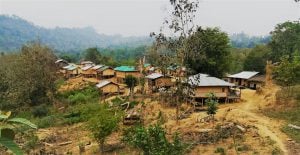
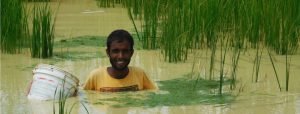
![Embankment construction on the Sundari river near Raghunathpur [image by: Peter Gill]](https://dialogue.earth/content/uploads/2018/08/IMG_9106-300x225.jpg)

![A resident of Raghunathpur standing on an embankment with bamboo revetment on the Sundari river [image by: Peter Gill]](https://dialogue.earth/content/uploads/2018/08/IMG_9311-300x225.jpg)

